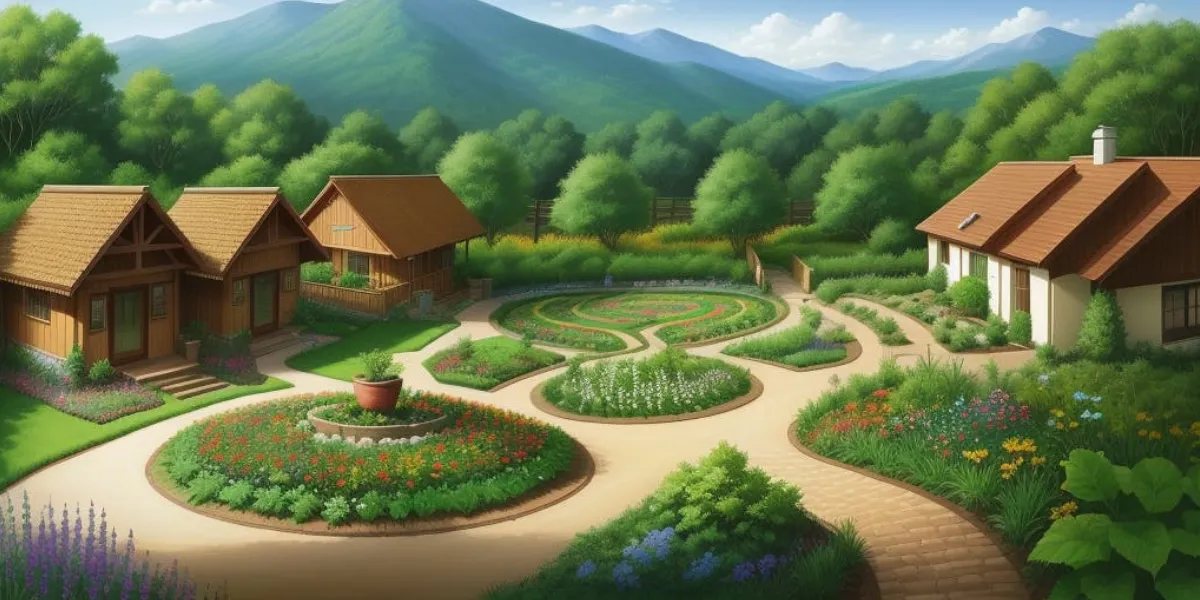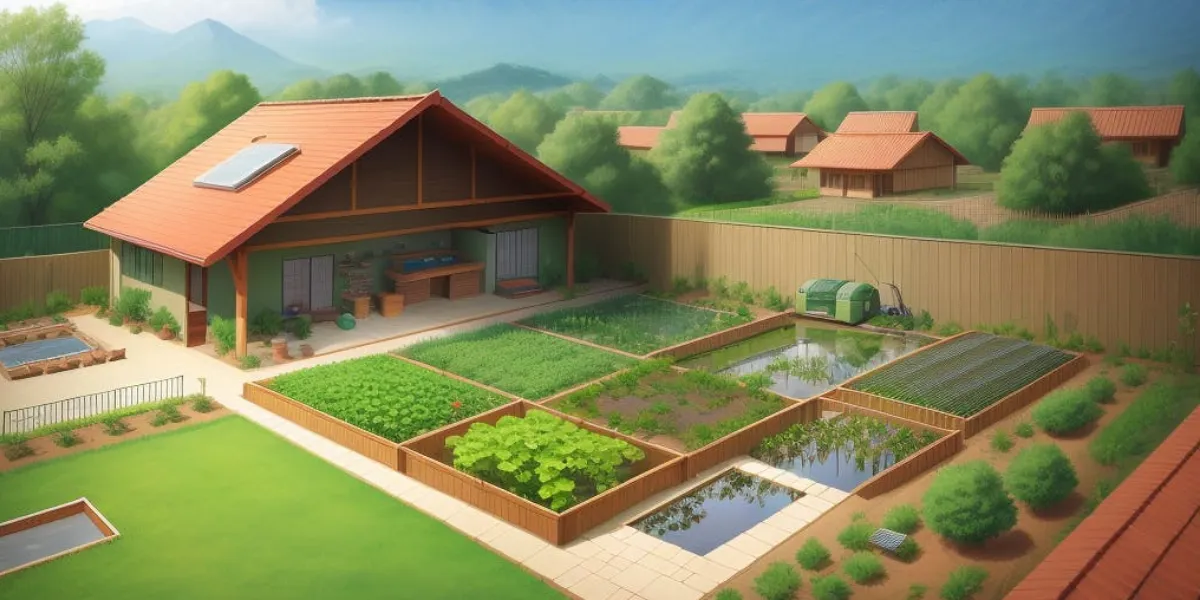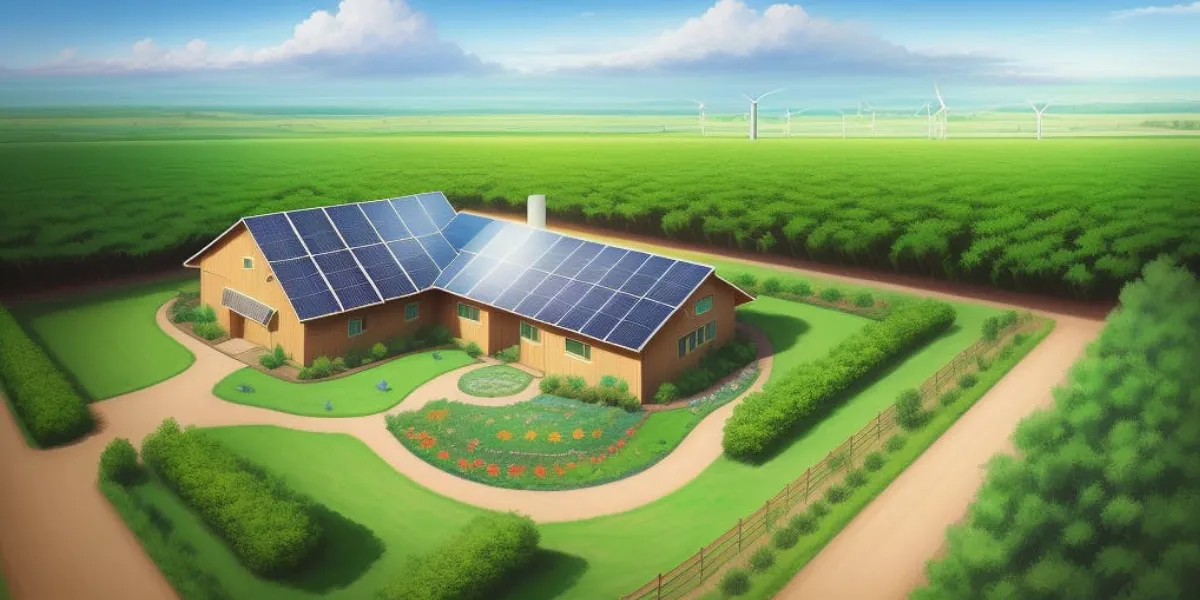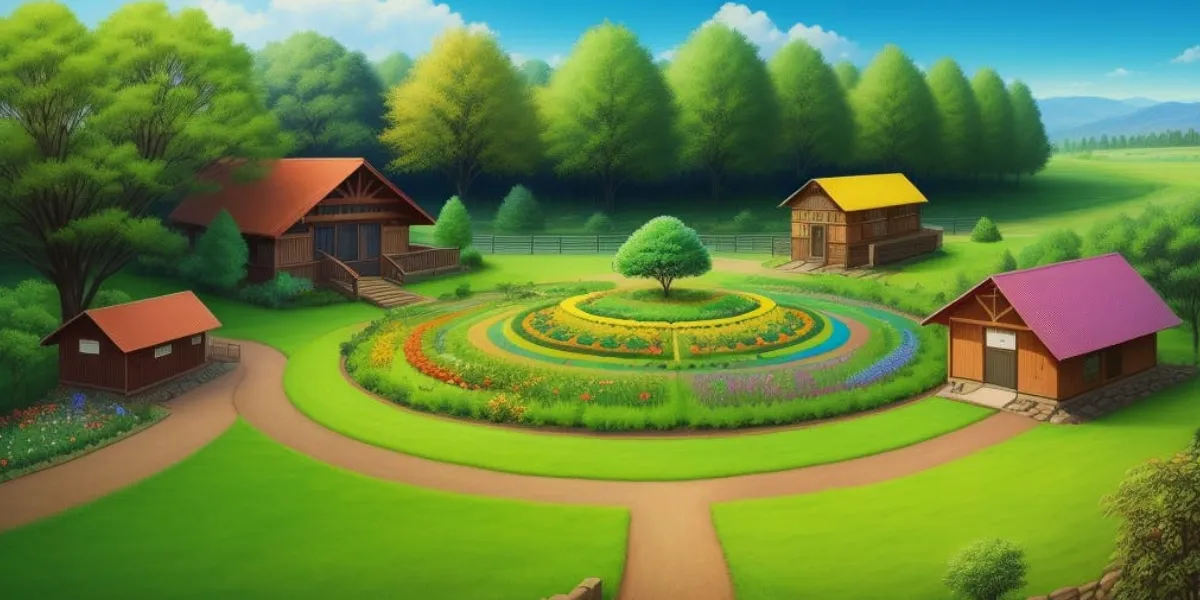
The 12 Principles Of Permaculture: Transform Your Garden (And The World)
Looking to break free from the destructive patterns of the modern world? Discover the transformative power of permaculture. In this article, I will introduce the 12 principles that can revolutionize your life and create a sustainable future. Developed in the 1970s, permaculture offers practical solutions that can be applied in every aspect of your daily routine. From caring for the planet to ensuring a fair share for all, these principles will guide you towards a more resilient and harmonious world. These guidelines aren’t just about planting seeds; they’re about cultivating a future where sustainability and abundance go hand in hand. So, roll up your sleeves; it’s time to transform your world, one garden at a time.
Key Summaries
Observe and interact, catch and store energy, obtain a yield, and apply self-regulation and feedback are the principles of permaculture.
Design efficiency involves maximizing productivity and minimizing waste, ensuring visually appealing and harmonious designs, designing with practicality in mind, and integrating the design seamlessly into the natural environment.
Integration and collaboration emphasize integration over segregation, integrating various elements within the permaculture design, integrating communities and fostering collaborative systems, encouraging diverse interactions and sustainable relationships, promoting cooperative problem-solving and collaborative decision making, and embracing the principle of integration in organizations for more effective actions.
Sustainable practices include using small, slow solutions, valuing diversity, using edges and valuing the marginal, understanding and working with dynamic changes, and evolving solutions.
What Are The Core Design Values Of The 12 Permaculture Principles
The 12 Principles of Permaculture serve as a set of guidelines or ethics that guide sustainable living, design, and ecological practices. These principles were formulated by Bill Mollison and David Holmgren, the founders of permaculture, as a way to mimic natural ecosystems' resilience and sustainability in human-designed systems.
The principles aim to encourage thoughtful and holistic approaches to design, agriculture, and community development. They emphasize working with nature rather than against it, promoting harmony, diversity, and regeneration. Here they are briefly summarized:
Observe and Interact: Understanding and observing natural patterns before making changes.
Catch and Store Energy: Collect and use resources efficiently.
Obtain a Yield: Ensuring that efforts produce valuable returns.
Apply Self-Regulation and Accept Feedback: Monitoring and adjusting systems to maintain balance.
Use and Value Renewable Resources and Services: Relying on sustainable resources.
Produce No Waste: Creating closed-loop systems where waste becomes a resource.
Design from Patterns to Details: Understanding the whole system before implementing specific elements.
Integrate Rather Than Segregate: Creating beneficial relationships between different elements in a system.
Use Small and Slow Solutions: Making incremental changes and observing their effects.
Use and Value Diversity: Encouraging diverse elements to enhance resilience and productivity.
Use Edges and Value the Marginal: Recognizing the potential of boundary areas and diverse landscapes.
Creatively Use and Respond to Change: Embracing change as an opportunity for innovation and adaptation.
The principles are flexible and can be applied to various contexts, from agriculture and architecture to social systems and personal lifestyles. They promote a mindset that fosters sustainability, cooperation with nature, and the creation of regenerative systems that benefit both humans and the environment.

1. Observe And Interact
How can you actively engage with your surroundings to better understand and interact with the natural world?
One important way is through observation techniques. By taking the time to observe the environment around you, you can gain valuable insights into the natural patterns, interconnected systems, and adaptation strategies that exist in nature. This heightened environmental awareness allows you to make more sustainable choices and engage in ethical decision making.
Interacting with nature and learning from it can inspire you to implement sustainable practices in your own life. Additionally, community engagement plays a crucial role in this process, as it allows you to share knowledge and collaborate with others who are also striving for a more ethical and sustainable way of life.
2. Catch And Store Energy
Continuing from the previous subtopic of ‘Observe and Interact’, actively engaging with your surroundings and observing nature’s patterns and systems allows you to effectively catch and store energy for sustainable living.
One way to do this is through solar power, harnessing the abundant energy from the sun. By utilizing solar panels and other renewable resources, you can generate electricity and reduce your dependence on non-renewable sources.
Energy storage is also crucial in ensuring a constant supply of power. This can be achieved through batteries or other innovative technologies.
Energy conservation plays a significant role in sustainable living, emphasizing the need to use resources efficiently and minimize waste. Incorporating permaculture design principles, such as energy-efficient buildings and green technology, can further enhance your efforts.

3. Obtain A Yield
To obtain a yield in permaculture, you actively engage with your surroundings and observe nature’s patterns and systems, allowing you to effectively catch and store energy for sustainable living.
Here are five key principles to help you maximize productivity and optimize yields in your permaculture practice:
Sustainable harvesting: Harvest resources in a way that ensures their long-term availability and regeneration.
Resource optimization: Make efficient use of available resources, minimizing waste and maximizing their potential.
Efficient utilization: Utilize resources in a way that minimizes energy inputs and maximizes output.
Yield diversification: Cultivate a diverse range of plants and animals to enhance productivity and resilience.
Yield management: Continuously monitor and adapt your system to balance inputs and outputs, maximizing overall yield.
4. Apply Self-Regulation And Feedback
To apply self-regulation and feedback in permaculture, you must actively monitor and adjust your practices to ensure sustainable and efficient outcomes. Self-regulation benefits you by allowing you to take control of your actions and make conscious decisions that align with the principles of permaculture.
By creating feedback loops, you can gather information about the effects of your actions and make improvements accordingly. This feedback is crucial in understanding the outcomes of your efforts and making necessary adjustments.
Self-awareness is another benefit of self-regulation, as it allows you to reflect on your actions, learn from your mistakes, and continuously improve. Monitoring your progress, adapting to change, and adjusting strategies based on feedback are essential self-discipline practices in permaculture.

5. Use And Value Renewable Resources and Services
Embrace the abundant potential of renewable resources to power your life sustainably and efficiently. By utilizing renewable energy sources, such as solar panels, wind turbines, hydroelectric power, biomass energy, and geothermal energy, you can contribute to a more sustainable future.
Renewable energy is a form of sustainable power that harnesses natural resources to generate electricity, without depleting them. Green technology plays a crucial role in transitioning away from fossil fuels and reducing carbon emissions.
Solar panels capture the sun’s energy and convert it into electricity, while wind turbines harness the power of the wind. Hydroelectric power utilizes the force of flowing water, and biomass energy uses organic matter to produce heat and electricity. Geothermal energy taps into the Earth’s heat to generate power.
Embracing these alternative energy sources helps protect the planet and ensures a brighter future for generations to come.
6. Produce No Waste
By incorporating the principle of using and valuing renewables, you can now focus on the next principle of permaculture, which is to produce no waste.
Producing no waste is about reducing consumption, implementing circular economy practices, and effectively managing waste. It involves adopting sustainable living habits and eco-friendly practices that prioritize resource conservation.
Recycling solutions and waste reduction strategies are key in achieving a waste-free lifestyle. Upcycling ideas can also be explored to repurpose items that would otherwise end up in the landfill.

7. Design From Patterns To Details
As you continue exploring the principles of permaculture, it’s important to consider the concept of ‘Design from Patterns to Details’, which builds upon the previous principle of producing no waste. This principle emphasizes the importance of starting with an understanding of the larger patterns and systems before delving into the details of design.
Here are five key aspects to consider when applying this principle:
Design efficiency: Creating designs that maximize productivity and minimize waste.
Aesthetics balance: Ensuring that the design is visually appealing and harmonious.
Practical implementation: Designing with practicality in mind, making it easy to implement and maintain.
Natural integration: Integrating the design seamlessly into the natural environment.
Sustainable patterns: Incorporating patterns that support long-term sustainability.
8. Integrate Rather Than Segregate
To create a truly sustainable and interconnected ecosystem, integrate, rather than segregate, various elements within your permaculture design. This principle applies not only to the plants in your garden, but also to the communities and organizations you’re a part of.
By integrating communities, adopting collaborative gardening practices, and fostering cooperative systems, you create diverse interactions and sustainable relationships. Just as polycultures benefit from the diversity of plant species, integrating communities allows for diverse perspectives and collaborative decision making. It encourages cooperative problem-solving, where everyone’s input is valued and considered.
Integration in organizations promotes a sense of unity and shared responsibility, leading to more effective and impactful actions. Embracing this principle of integration leads to a more resilient and thriving permaculture system, both in our gardens and in our communities.

9. Use Small And Slow Solutions
Integrating communities and fostering collaborative systems, you can now explore the principle of ‘Use Small, Slow Solutions’ in permaculture. This principle emphasizes the importance of small scale gardening and gradual implementation to achieve sustainable growth. By making incremental changes and practicing sustainable practices, you can make gradual progress towards a more sustainable lifestyle.
Here are five key points to consider:
Start with small steps: Begin with a small windowsill garden or a small plot of land to experiment with sustainable gardening techniques.
Embrace gradual transformation: Instead of trying to overhaul your entire lifestyle at once, focus on making one sustainable change at a time.
Practice slow and steady progress: Remember that sustainable solutions take time to develop and require patience and persistence.
Prioritize sustainable practices: Incorporate practices such as composting, water conservation, and organic gardening to promote sustainability.
Foster sustainable communities: Engage with like-minded individuals and communities to share knowledge, resources, and support for sustainable living.
10. Use And Value Diversity
Embrace diversity in your garden, home, and life to create a thriving and resilient ecosystem. Promoting inclusion and celebrating differences is essential in building a strong community.
By fostering collaboration and embracing uniqueness, we cultivate empathy and encourage dialogue. It’s important to respect different perspectives and nurture creativity, as this allows for a richer and more vibrant environment. Valuing individuality creates a space where everyone feels seen and heard, fostering a sense of belonging.
In a diverse ecosystem, each plant and animal has a role to play, contributing to the overall health and balance. Similarly, in a diverse community, each person brings their own unique strengths and experiences, enriching the collective.
Embracing diversity isn’t only a moral imperative, but it also leads to greater resilience and innovation in all aspects of life.

11. Use Edges And Value The Marginal
Value the Marginal and Embrace the Edges of your garden, home, and life to unleash their full potential and foster resilience. By embracing the edges and valuing the marginal, you open yourself up to a world of possibilities.
Here are five ways to harness the potential of these overlooked spaces:
Value innovation: Embrace new ideas and approaches, exploring unconventional methods that can lead to breakthroughs.
Embrace diversity: Recognize the power of different perspectives and experiences, fostering inclusivity and creating a richer, more vibrant environment.
Cultivate resilience: Adapt and thrive in the face of challenges by building a strong foundation and nurturing creativity.
Explore boundaries: Push the limits of what’s considered possible, challenging conventional norms and expanding your horizons.
Foster adaptability: Encourage experimentation and flexibility, allowing for continuous growth and learning.
12. Creatively Use And Respond To Change
Adapt and respond creatively to change in order to thrive in a rapidly evolving world. Permaculture teaches us that change is inevitable and that we must design our systems and strategies to be resilient and responsive. This requires an innovation mindset and embracing uncertainty, as well as flexible thinking and dynamic approaches.
Change management and adaptive strategies are essential for building resilience and ensuring the longevity of our permaculture practices. By creating responsive systems and embracing the ever-changing nature of our environments, we can develop evolving solutions that are transformative.

Frequently Asked Questions
How can permaculture principles be applied in urban garden settings?
In urban settings, you can apply permaculture principles through vertical gardening, rooftop farming, composting solutions, community gardens, rainwater harvesting, urban foraging, pollinator-friendly urban design, green roofs, edible landscapes, and sustainable waste management.
What are some examples of renewable energy sources that can be used in permaculture?
You can incorporate renewable energy sources in permaculture, such as solar power, wind turbines, hydroelectric power, biomass energy, geothermal energy, tidal power, biofuel production, passive solar design, micro hydropower systems, and anaerobic digestion.
How can self-regulation and feedback be implemented in a permaculture system?
To implement self-regulation and feedback in a permaculture system, you can focus on soil health, nutrient cycling, water conservation, pest management, pollinator habitat, composting methods, succession planning, regenerative agriculture, ecosystem resilience, and wildlife corridors.
What are some ways to design a permaculture system that promotes biodiversity?
To design a permaculture system that promotes biodiversity, incorporate native plantings, companion planting, and wildlife habitats. Implement water management techniques, soil regeneration practices, and polyculture systems. Utilize integrated pest management, food forests, beekeeping, and aquaponics systems.
How can permaculture principles be adapted to different climates and ecosystems?
To adapt permaculture principles to different climates and ecosystems, you must consider adaptation challenges, climate-specific strategies, ecosystem diversity, soil conservation techniques, water management solutions, plant selection, microclimate creation, wildlife habitat integration, indigenous knowledge, and resilience building practices.
Conclusion
Now that you’ve been introduced to the 12 principles of permaculture, you have the tools to create a sustainable and thriving future. By observing and interacting with your environment, catching and storing energy, and valuing renewables, you can make a positive impact on the planet. Remember to apply self-regulation and feedback, embrace diversity, and creatively respond to change. With these principles in mind, you can contribute to a more resilient and harmonious world. So, what’re you waiting for? Start implementing permaculture in your life today and be part of the global movement for change.

